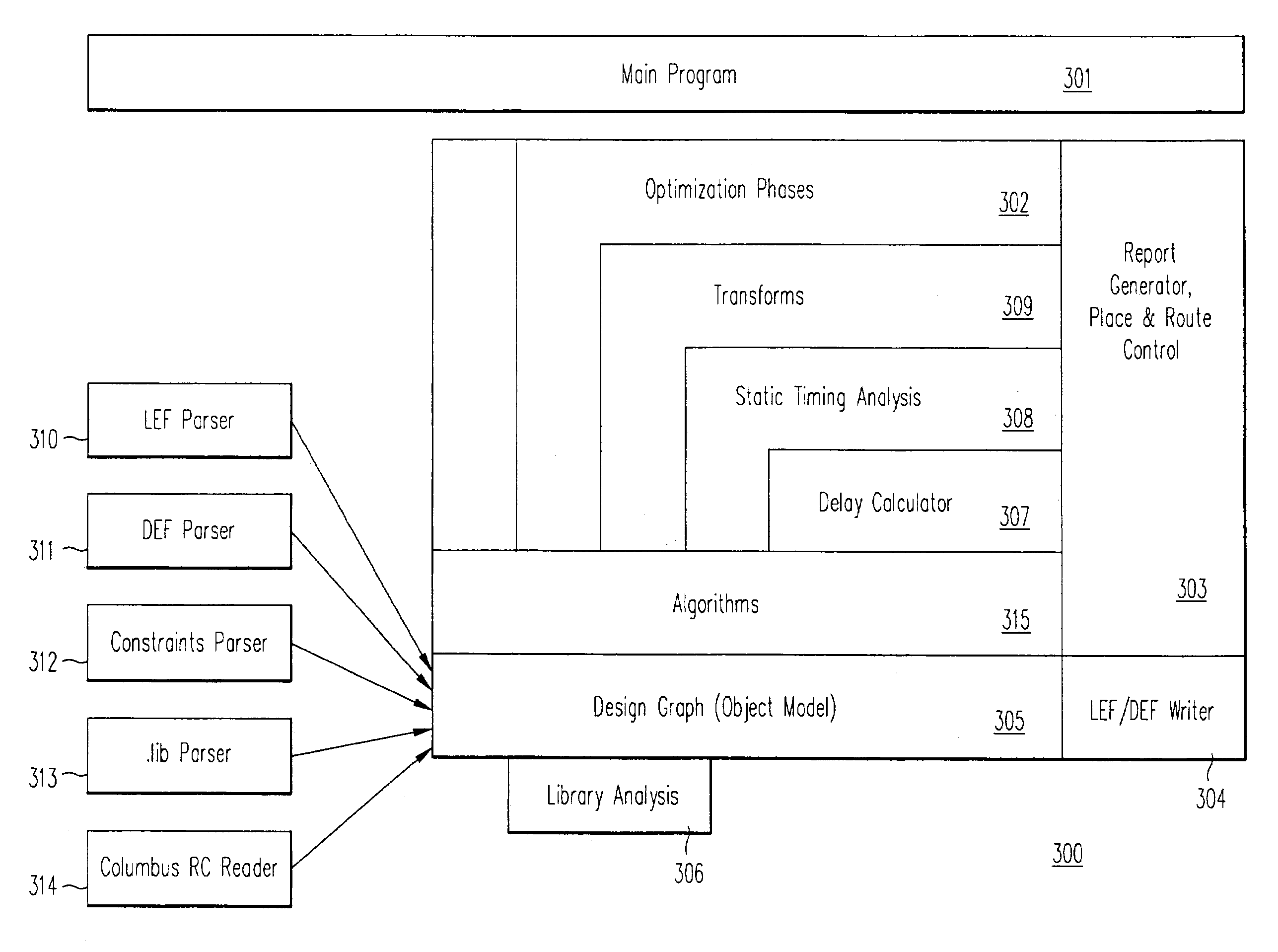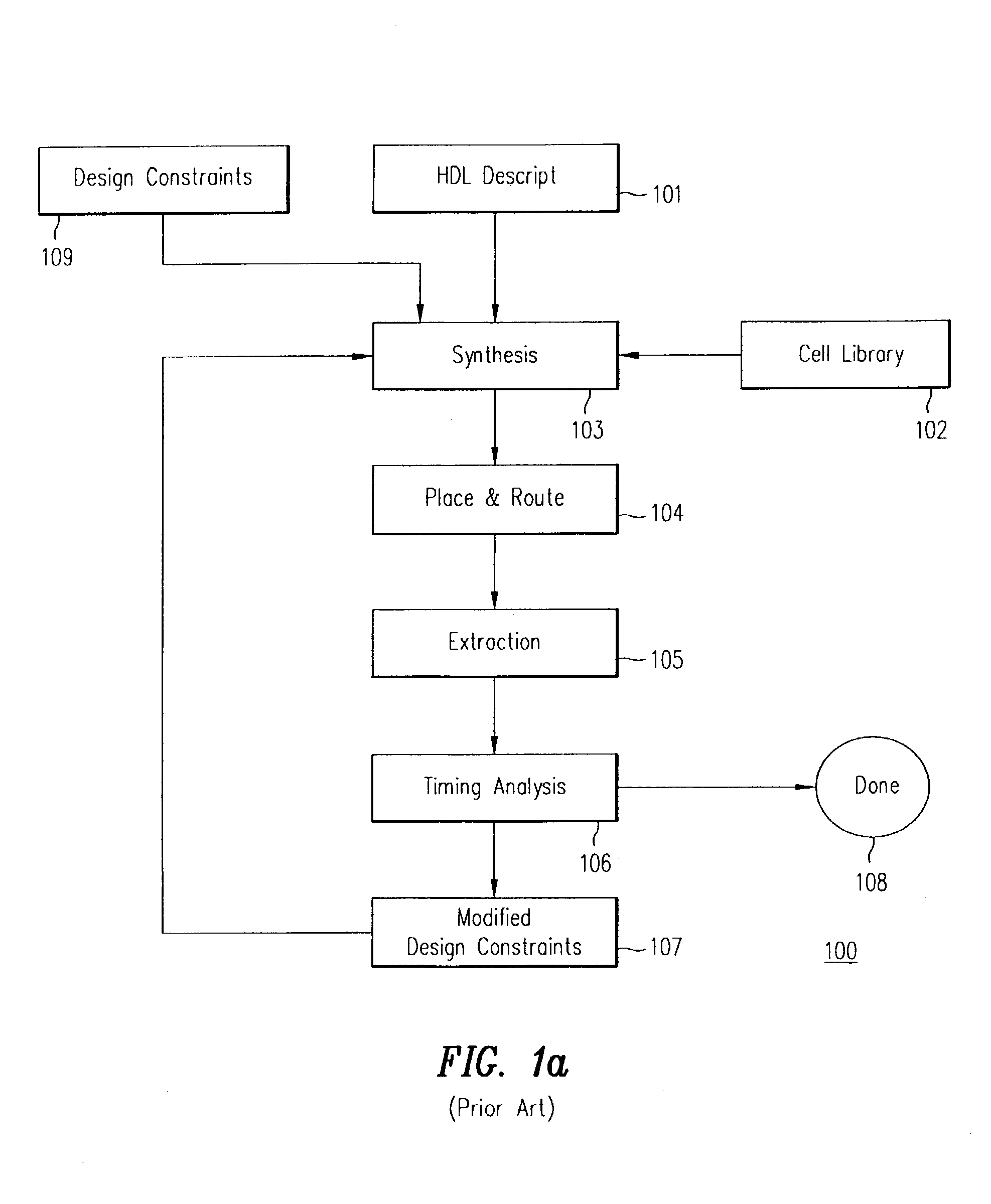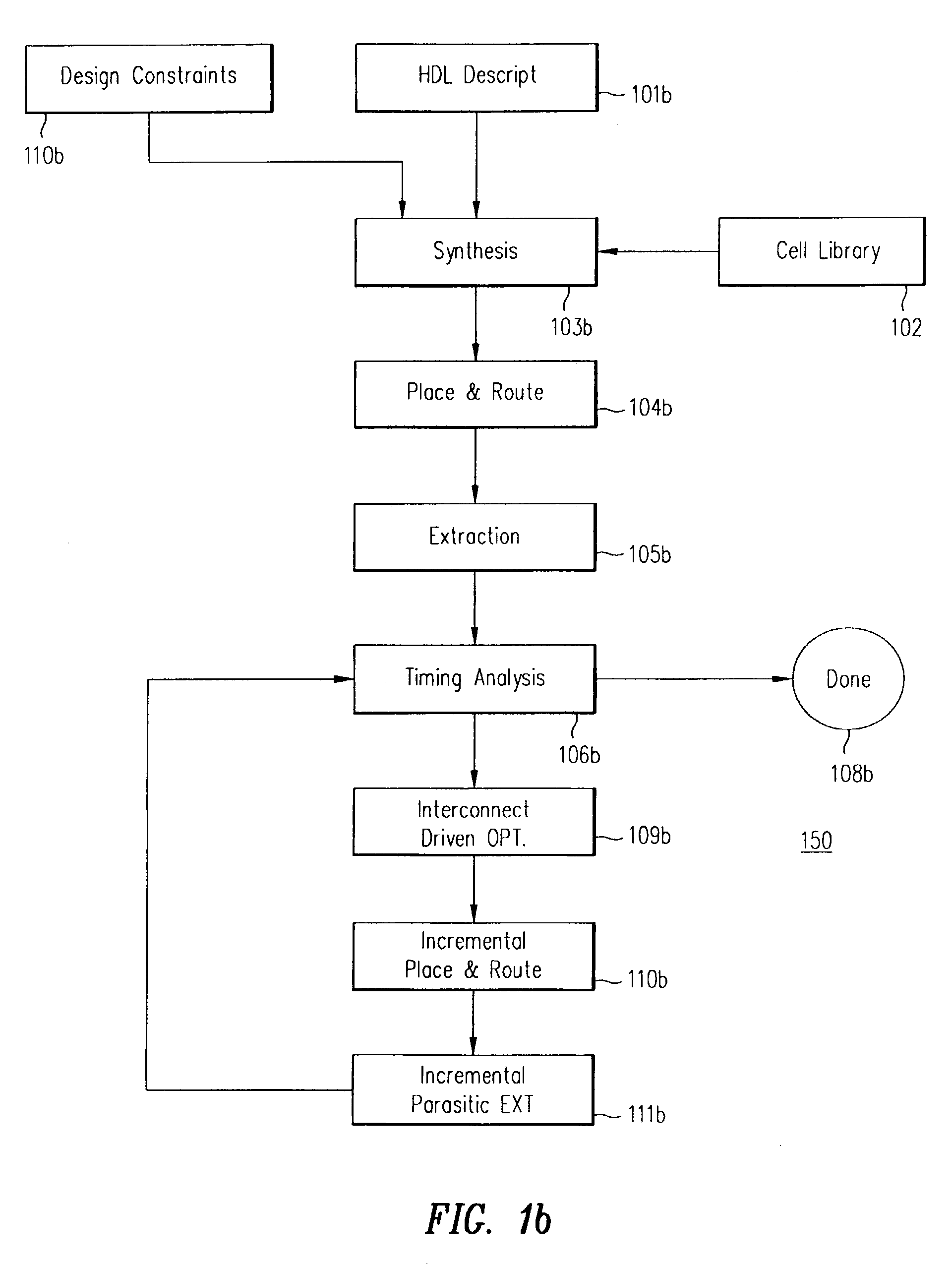Method and apparatus for interconnect-driven optimization of integrated circuit design
- Summary
- Abstract
- Description
- Claims
- Application Information
AI Technical Summary
Benefits of technology
Problems solved by technology
Method used
Image
Examples
Embodiment Construction
[0063]The present invention provides a design tool and a method for optimizing a standard-cell based integrated circuit after placement and routing are performed, without requiring complete re-synthesis of the integrated circuit design. The present invention optimizes the integrated circuit design based on accurate extraction and modeling of the interconnect network.
[0064]FIG. 1b shows an overview of design flow 150 in one embodiment of the present invention. Unlike the prior art, in the present invention, the integrated circuit design steps of synthesis, initial placement and initial routing are not re-iterated. Instead, modifications to the physical design are performed incrementally. After completing HDL description, synthesis, place and route, extraction and timing analysis steps 101b–106b, which can be substantially the same as corresponding steps 101–106 of FIG. 1a, the timing problems uncovered by timing analysis step 106b are addressed by an interconnect optimization step 10...
PUM
 Login to View More
Login to View More Abstract
Description
Claims
Application Information
 Login to View More
Login to View More - R&D
- Intellectual Property
- Life Sciences
- Materials
- Tech Scout
- Unparalleled Data Quality
- Higher Quality Content
- 60% Fewer Hallucinations
Browse by: Latest US Patents, China's latest patents, Technical Efficacy Thesaurus, Application Domain, Technology Topic, Popular Technical Reports.
© 2025 PatSnap. All rights reserved.Legal|Privacy policy|Modern Slavery Act Transparency Statement|Sitemap|About US| Contact US: help@patsnap.com



